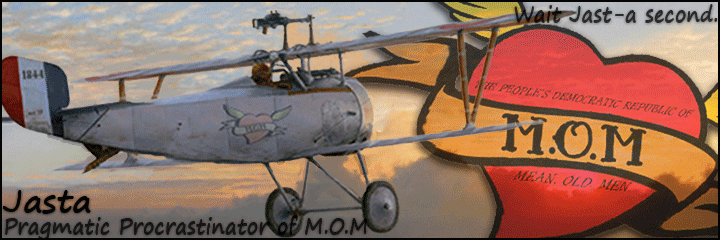The height of the Jasta's power came during April 1917 at the Battle of Arras, better known as "Bloody April." The French air squadrons had withdrawn to recover from the previous months of battle, but England had decided to fight on despite delays in delivery of the next generation of fighters to the Front. The English believed that their sheer numerical superiority--385 fighters over the 114 German fighters--was enough to ensure victory. During that month, England lost a third of its fighter force, and the flying life expectancy of an English pilot was 17½ hours. The RFC suffered particularly severe losses - about three times as many as the Imperial German Army Air Service (Luftstreitkräfte) over the same period - but continued its primary role in support of the ground offensive.
The Battle of Arras
In April, the Allies launched a joint ground offensive, with the British attacking near Arras in Artois, northern France, while the French Nivelle Offensive was launched on the Aisne. Their air forces were called on to provide support, predominantly in reconnaissance and artillery spotting.
The Battle of Arras began on April 9, 1917. In support, the Royal Flying Corps deployed 25 squadrons, totalling 385 aircraft, about a third of which were fighters (or "scouts" as they were called at the time). There were initially only five German Jastas in the region, but this rose to eight as the battle progressed (some 114 or so operational fighter aircraft in total).
Since September 1916, the Germans had held the upper hand in the contest for air supremacy on the Western Front, with the Albatros D.II and D.III outclassing the British and French fighters charged with protecting the vulnerable Royal Aircraft Factory B.E.2c, Royal Aircraft Factory F.E.2b and Sopwith 1½ Strutter 2-seater reconnaissance and bomber machines. The allied fighter squadrons were equipped with obsolete "pusher" planes such as the Airco DH.2 and Royal Aircraft Factory F.E.8, and other outclassed types such as the Nieuport 17. Only the SPAD S.VII, Sopwith Pup and Triplanecould compete on equal terms with the Albatros, but these were few in number and spread along the front. The new generation of Allied fighters were not yet ready for service, although No. 56 Squadron RFC with the Royal Aircraft Factory S.E.5 was working up to operational status in France. The Bristol F2a also made its debut with No. 48 Squadron during April, but lost heavily on its very first patrol, with four out of six shot down in an encounter with five Albatros D.IIIs of Jasta 11, led by Manfred von Richthofen.
The Aftermath of "Bloody April"
During April 1917, the British lost 245 aircraft, 211 aircrew killed or missing and 108 as prisoners of war. The German Air Services lost 66 aircraft from all causes. As a comparison, in the five months of 1916's Battle of the Somme the RFC had suffered 576 casualties. Under Richthofen's leadership, Jasta 11 scored 89 victories during April, over a third of the British losses.
The month of April marked the low point for the Royal Flying Corps. However, despite the losses inflicted on the British, the German Air Service failed to stop the Royal Flying Corps from carrying out its prime objectives. The RFC continued to support the army throughout the Arras offensive with up-to-date aerial photographs, reconnaissance information and harassing bombing raids. In spite of their ascendency, the German Air Service did not act agressively. Acting on oreder from high command the German squadrons continued to be used defensively. Most of their missions were flying interception patrols behind their own lines. Thus the Jastas established "air superiority", but certainly did not achieve real air supremacy.
Summer 1917: The Tide of Furtune Turns
James McCudden
Born: March 28, 1895
Died: July 9, 1918
"Bloody April" forced the British to quickly revise its approach to aerial combat, as the Germans had done the year before. It had now been proven that well-trained pilots flying the best planes were much more important than mere numerical superiority. Britain rushed to organize pilot training schools with experienced veterans as instructors. The students were taught using James McCudden's Notes on Aeroplane Fighting in Single-Seated Scouts and Fighting in the Air. The Sopwith Camel had arrived earlier that year, but it was very difficult to fly and there had been a high number of fatal accidents. The new training schools allowed enough training time for pilots to become familiar with the planes before being thrust into the chaos of combat.
www.wwiaviation.com/Bloody_April-1917.html








